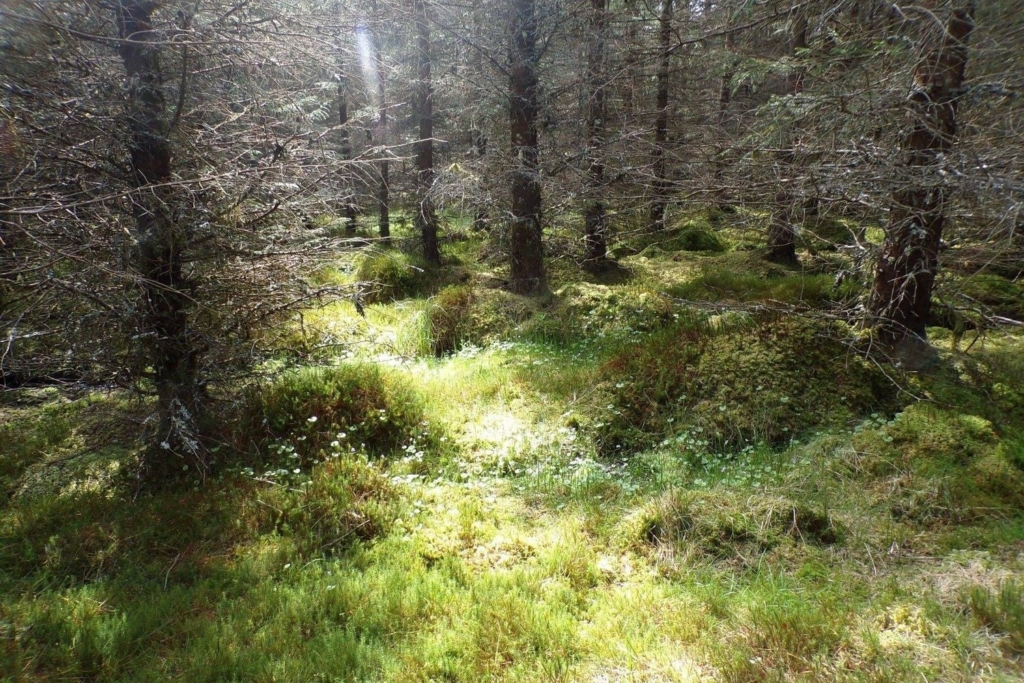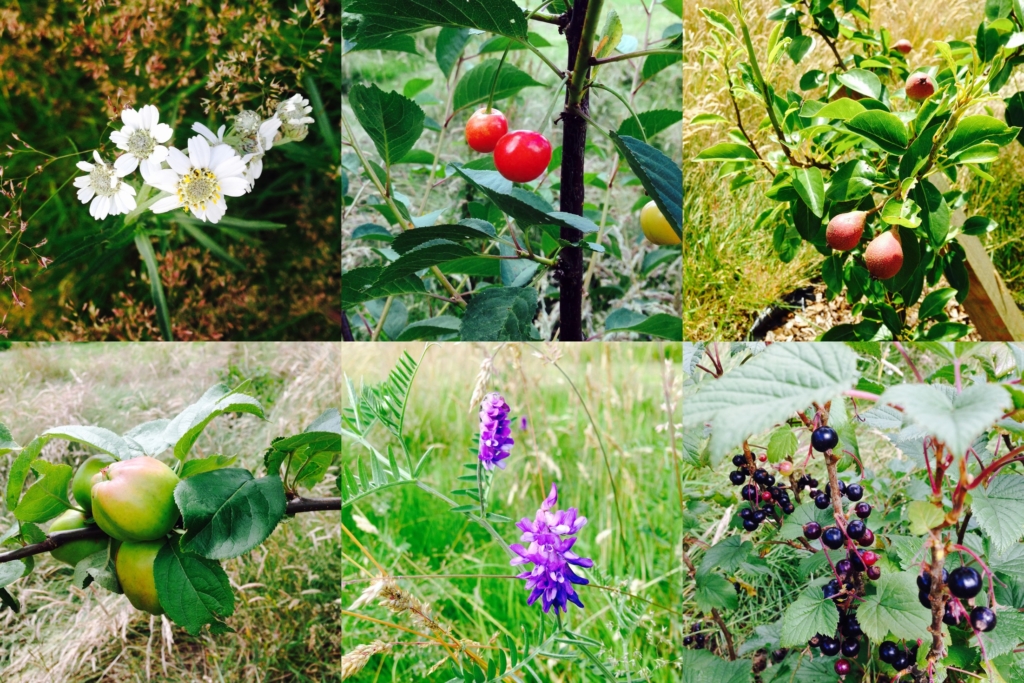Landed Power, Ecosystems and Scottish Wildlife

Things look bleak for much of Scotland’s environment and ecosystems.
A number of Scottish NGOs and environmental charities have claimed that conservation funding in Scotland has been slashed by tens of millions of pounds over the last ten years, with Scottish government funding for nature fell from 0.55% of its total budget to 0.25% between 2010/11 and 2022/23.
The claim has been made by the group which includes the RSPB, the John Muir Trust, Trees for Life, and the Scottish Wildlife Trust, claim that:
- Nearly 60% of Scotland’s legally protected sites of special scientific interest – the most precious in the country – have not been assessed in more than a decade, with only 65% in favourable condition.
- Only half of the sites which make up Scotland’s “Atlantic rainforest” are in favourable condition.
This last point chimes with the publication this week of a report by the Forest Policy Group on Who Owns Scotland’s Forests?
In 2012 the FPG commissioned a report on the ownership of Scotland’s forests from the writer and researcher, Andy Wightman. His report showed that Scotland’s forests were owned by a tiny handful of owners and that this very concentrated ownership was in stark contrast to most of the rest of Europe.
They have just published an updated report to look at where we are today. The new report shows this concentration has only got worse.

Who Owns Scotland’s Forests?
The number who own the majority of it has decreased resulting in a greater concentration of ownership compared with ten years earlier. In 2022, 75% of the privately-owned forest (130,979ha) was owned by 164 owners compared with 75% (115,955ha) being owned by 199 owners in 2012.
- Ownership remains dominated by financial investment owners and estates with 44.2% of the extent where ownership was identified accounted for by financial and investment owners (41.8% in 2012) and 42.8% owned by traditional estates (46.2% in 2012).
- The majority of private forest owners are absentee owners who account for 56.3% of the extent (56.8% in 2012). The majority is owned by owners who live out-with Scotland in the rest of the UK (68.3% in 2022 compared with 50.2% in 2012)
- The percentage of the area owned by owners domiciled in Scotland has declined from 26.2% in 2012 to 7.4% in 2022.
So, Who Owns Scotland’s Forests? Not us!
You can read the report here FPG-Forest_Ownership_Policy_review_Nov23_Report_2.pdf (forestpolicygroup.org)
Taken as a whole it’s damning indictment of the support for the environment in Scotland, and this at a time where you can the Scottish Green Party at the heart of government.
Clearly the wider issue is about land ownership and management.
As the FPG state:
“Such a pattern continues to be an outlier in European terms where private ownership is far more diverse and small scale and where local government plays a much greater role (for example, 20% of the total forest area of France is owned by municipalities). The reasons for this are historical, legal and cultural but are rooted the land reforms that took place across Europe in past centuries.”
“These include the abolition of primogeniture and conferring inheritance rights to land on children (something still lacking in Scotland), the abolition of feudal tenure, providing tenants with ownership and strong local government.”
“The report concludes that ownership matters and that providing greater opportunities to individuals, businesses and communities can only be achieved through reform to land governance. In the immediate term, this requires better information on the pattern of forest ownership, something which is in the power of Scottish Ministers to collect in order to better inform public policy.”
The group of NGOs and environmental charities have pointed out that Scotland will fail to meet its ambitious rewilding and conservation targets unless it reverses deep cuts in funding for the environment. But NatureScot and SEPA (two of the organisations who have had massive cuts) are themselves deeply problematic organisations. Dolling them out won’t fix things – we need a complete overhaul of the sector and a massive re-think of aims and purpose give the extent of the ecological crisis. As the problem of forests points to – the issues are systemic – and are rooted in landed power. Without confronting and over-throwing landed power – nothing will change.

The argument put forward by the landowners every time there is talk of challenging their powers is that ‘they have decades, centuries, eve, of experience in managing the land and always act in the best interests of the land. And BBC Scotland will devote programmes to give the landowners an unchallenged platform and the rest of the Scottish media will run sympathetic stories.
The father-in-law of the recently ennobled, David Cameron is the Chair of the Scottish landowners group, so I am sure that gongs will be found for various Scottish Labour and LibDems MPS and MSPs to add their support to the Tories. Her Dameness the Jaikie of Baillie and her Ladyship the Katy of Clark are pining for more people of quality to join them.
“…and always act in the best interests of the land…”
An argument that falls firmly on its fundament, when you consider the amount of land that’s given over to, allegedly “managed”, moorland for the sole purpose of blasting game birds into oblivion.
Between 1 and 1½ million hectares, or 12-18% of Scotland’s total land area, depending on what sources are used. Note: that’s all land; once you factor in land with little potential (barren hillside, uninhabited islands and ocean scoured skerries) you can add a few percentage points when considering how much potentially useful land they occupy.
Near monocultures of heather,(calluna vulgaris) that support very little wildlife; what little there is being compromised by regular heather burning.
Not sure we needed a report from Mssrs Wightman and Hollingsworth to realise this. SG and UK government policy renders such concentration inevitable, key points being:
1) Massive tax breaks on forest ownership (inheritance and income tax). https://greshamhouse.com/wp-content/uploads/2019/10/GH-ForestryTaxation-Summary-June-2019-CN-edits.pdf
2) Public money lavished on extremely generous grants, largely going to large wealthy institutions and landed estates.
3) Salivation over future income streams from so called carbon capture and other ecosystem services
4) Profitable sidelines given the Covid inspired boom in staycations etc
5) Renewable energy development and hope value
6) Portfolio diversification for the super-rich
7) Until recently very significant increases in timber prices
All that would be required to bring this house of cards crashing down would be the merest hint of the withdrawal of the tax breaks and a tightening of grant conditions (eg the quaint idea that planting on peat land should not qualify for grant aid). In addition we could consider actual land taxation for these huge landscape-scale economic units. If this were to happen prices would fall dramatically and community (and other small entities) could re-enter the market. As things stand, with some ‘forests’ having increased in value 500% in 3 years, the community acquisition aspiration is dead.
SG stand by and watch all this happening. They could act on grants and land tax. But they don’t. Why? One reason is they feel under severe pressure from industry lobby groups like CONFOR to maintain annual new planting targets, everything is subordinated to that aim. The other reason of course is that everything SG are involved in these past several years turns to dust.
The UK government is not likely to close the inheritance tax loophole either. Exemptions such as this (and for famland/businesses) enable the wealthy to keep their legacies intact and ensure inheritance tax bites a bit lower down the income scale on those without the resources to play in the rich man’s arena. This is highly satisfactory to the Tories.
For those interested in Britain’s very rare Atlantic rainforests, I would recommend ‘The Lost Rainforests of Britain’ by Guy Shrubsole (2022). It has several detailed sections about Scottish rainforests which have their own even more unique qualities. If you don’t know about these remarkable habitats that only occur in a few places in the world (UK, Ireland, NZ and Japan as far as I know) then there is much to learn. Of course they are now seriously depleted in the UK and Ireland but are still there and need attention. This is very much tied up with the business of land ownership and use.
‘The Lost Rainforests of Britain’ by Guy Shrubsole – nominative determinism if ever I saw it!
Ha ha yes.
Also, I was contacted by an anthropologist the other day interested in tree planting activities I am involved in; her surname is Greenleaf.
On a totally different subject, I know a very fine organist called David Pipe.
English surnames (as opposed to Scottish ones) are very conducive to ND, by their frequent oddness. I once knew someone called Cilla Snowball, isn’t that wonderful!
Indeed it is. I guess it is down to the mongrel nature of ‘the English’.
Scottish forests, like its other biomes, should have representation in government, as should its living species. There are life science proxies and objective measures of health to support the required kinds of decision-making. The notion that people can own forests should be rendered obsolete. This framework for future governance should be built into a new political constitution on independence.
#biocracynow
Good luck with this concept, SleepingDog.
@MacGilleRuadh, if God can be represented in the House of Lords (while theologians argue about divine will), I don’t see any logical obstacle to representing forests (etc) and forest-dwellers (etc) in a new parliament. Many other constructs have been represented before (Crown, City of London, guilds and trade unions, universities etc). However, in a biocracy, authority should be distributed (as widely as possible), not resting in a spokesperson, nor confined to national boundaries. The biosphere must be protected, even against democratic will (ideally by democratic restriction of democracy through an encoded constitution). People shouldn’t come back from lunch to find their own government has embarked on a campaign of legal ecocide.
Existing measures of biome health can be upgraded and new ones developed over time in conjunction with global best practice:
https://www.environment.gov.scot/our-environment/state-of-the-environment/ecosystem-health-indicators/condition-indicators/indicator-3-forests/
A thorough overhaul is urgently needed. The ‘reforms’ of the public agencies responsible for natural heritage and forestry in Scotland over the past decade appear to have left them singularly ill-equipped to tackle the challenges they face. Far from seeking to remedy the problems identified above, the Scottish Government, NatureScot and Scottish Forestry seem intent on perpetuating and intensifying them by contracting woodland expansion out to city bankers, fund managers and brewers, at considerable public expense. What they should be doing is mobilising and empowering communities to undertake this task. The Borders Wild Wood at Carrifran already demonstrates that this can succeed on a landscape scale.
Thanks Graeme, agree completely, yet as you say there are examples of radical alternatives and best practice that should be followed
Yes but one of the main reasons SG doesn’t do this is that initiatives such as Carrifran produce zero in terms of commercial timber. That’s what this is all about, the production of sawlogs for the few centralised private sector mills. You need to see it from the SG perspective (I’m sure this is how Fergus Ewing at least saw things), that Scotland has few enough natural economic advantages, one being large areas of marginal land where exotic conifers grow like stink. Therefore to achieve a modicum of rural economic activity commercial planting has to be given a high priority. That’s why grants have shot up in value and why the McKinnon review a few years back was designed to make it easier to get more Sitka in the ground.
Understood – but that seems incredibly one-dimensional – in terms of other ways to manage land either for communities, for biodiversity, for timber or for other wood uses.
Just so.